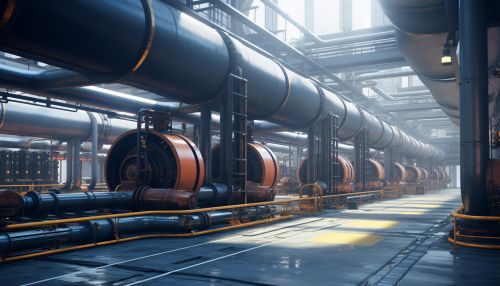Compressed air energy storage
Introduction
Compressed air energy storage (CAES) is a way to store energy generated at one time for use at another time. Using off-peak, inexpensive electricity for air compression, CAES stores energy in the form of compressed air in an underground reservoir. Energy storage is a significant issue in today's society, as the demand for energy continues to grow. CAES is one of the methods that has been developed to address this issue.


History
The concept of storing energy in compressed air is not new. The idea has been around for over a century, with the first practical application of the technology occurring in the 1970s in Germany. The Huntorf CAES Plant was the first of its kind, and it continues to operate today. Since then, several other CAES plants have been built around the world, including in the United States and the United Kingdom.
How it Works
The process of CAES involves three stages: charging, storage, and discharging. During the charging stage, electricity is used to power a compressor, which compresses air. The compressed air is then stored in an underground reservoir, such as a salt cavern or aquifer. When electricity is needed, the compressed air is heated and expanded in an expansion turbine, driving a generator for power production.
Types of CAES
There are two main types of CAES: diabatic and adiabatic.
Diabatic CAES, the more common type, involves heating the air during the expansion phase using an external heat source. This heat is usually provided by the combustion of natural gas.
Adiabatic CAES, on the other hand, stores the heat produced during the compression phase and reuses it during the expansion phase. This makes adiabatic CAES more efficient than diabatic CAES, but it is also more complex and currently less common.
Advantages and Disadvantages
Like any energy storage method, CAES has its advantages and disadvantages.
One of the main advantages of CAES is its scalability. CAES systems can be designed to store large amounts of energy, making them suitable for grid-scale energy storage.
Another advantage is the relatively low cost of CAES compared to other energy storage methods. This is due to the use of inexpensive and abundant air as the storage medium and the use of existing technologies for the compression and expansion processes.
However, CAES also has its disadvantages. One of the main disadvantages is the need for suitable geology for the storage of the compressed air. Not all locations have suitable underground reservoirs for CAES.
Another disadvantage is the energy loss associated with the compression and expansion processes. This energy loss reduces the overall efficiency of CAES.
Future of CAES
Despite its challenges, the future of CAES looks promising. With the increasing demand for energy storage solutions, CAES is likely to play a significant role in the future energy landscape.
Research is ongoing to improve the efficiency and reduce the costs of CAES. One area of research is the development of advanced adiabatic CAES, which has the potential to significantly increase the efficiency of CAES.
